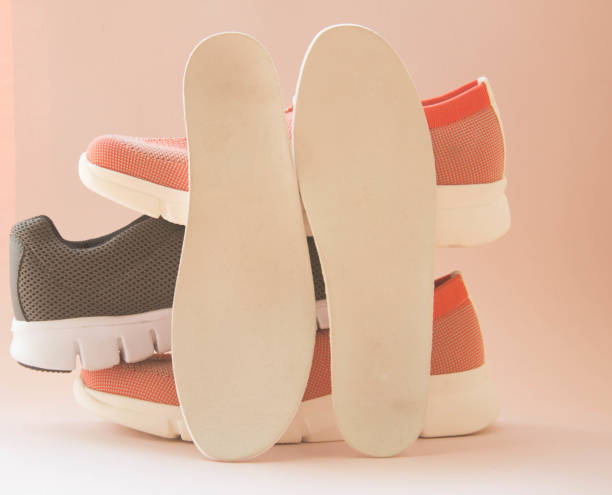
Running is a popular form of exercise enjoyed by many. It is simple, requires little equipment, and offers numerous health benefits. However, one of the most overlooked aspects of running is foot support. This is where insoles come into play. They can greatly affect running performance, comfort, and overall foot health.
Understanding Insoles
Insoles, also known as footbeds or inner soles, are inserts placed inside shoes. They provide extra cushioning, support, and stability. Insoles come in various types, designed for different purposes. Some are made to offer general comfort, while others address specific foot issues like plantar fasciitis.
The Role of Insoles in Running
Running puts a lot of stress on your feet. Each step generates a force that can be several times your body weight. This force travels through your feet, legs, and into your body. Without proper support, this can lead to pain, injuries, and poor performance.
Cushioning and Shock Absorption
Insoles can provide additional cushioning, which helps to absorb the shock from each step. This reduces the impact on your feet and legs, preventing pain and injuries. Runners often experience joint pain or stress fractures due to the repetitive impact. Good cushioning can mitigate these risks.
Support and Stability
Proper support is essential for maintaining good insole for running. Insoles can help in this area by providing support to your arches. This support keeps your feet aligned correctly, reducing the risk of injuries. It also helps distribute your weight evenly, improving balance and stability.
Correcting Foot Issues
Many runners have specific foot issues that affect their performance. Conditions like flat feet, high arches, or plantar fasciitis can cause significant discomfort. Insoles designed for these conditions can provide the necessary support and relief. For instance, insole for plantar fasciitis offer targeted support to the heel and arch, reducing pain and promoting healing.
Choosing the Right Insole
Choosing the right insole is crucial. There are several factors to consider to ensure you get the best support for your needs.
Foot Type
Everyone’s feet are different. Some people have flat feet, while others have high arches. Knowing your foot type is the first step in choosing the right insole. Many stores offer foot assessments to help you understand your foot structure and find the best insole.
Activity Level
The type of running you do can also influence your choice. Casual runners may need different support compared to marathon runners. Consider your running intensity and frequency when selecting an insole. This ensures you get the right level of support and cushioning.
Specific Needs
If you have specific foot issues like plantar fasciitis or overpronation, look for insoles designed to address these problems. Specialized insoles offer targeted support and can make a significant difference in comfort and performance.
Benefits of Using Insoles for Running
Using insoles can offer numerous benefits. They can enhance your running experience and help you achieve your fitness goals.
Improved Comfort
Comfort is key to a good running experience. Insoles provide extra cushioning and support, making your shoes more comfortable. This can help you run longer and enjoy your workouts more.
Injury Prevention
Running injuries are common, especially among those who run frequently. Insoles can help prevent injuries by providing proper support and reducing the impact on your feet and legs. This is particularly important for preventing stress fractures, shin splints, and joint pain.
Better Performance
Proper foot support can improve your running performance. When your feet are well-supported, you can maintain better form and efficiency. This means you can run faster and longer without discomfort.
Enhanced Recovery
Insoles can also aid in recovery. After a long run, your feet need time to heal and recover. Insoles provide ongoing support, helping to reduce fatigue and promote faster recovery. This is especially beneficial for runners training for long-distance events.
Common Misconceptions About Insoles
There are several misconceptions about insoles that can prevent people from using them effectively.
Insoles Are Only for Those with Foot Problems
Many believe that insoles are only necessary for those with foot issues. However, everyone can benefit from the extra support and cushioning they provide. Even if you don’t have specific problems, insoles can enhance your comfort and performance.
All Insoles Are the Same
Not all insoles are created equal. There are many different types designed for various needs. It’s important to choose the right insole for your foot type and activity level. Generic insoles may not provide the support you need.
Insoles Are Expensive
While some high-quality insoles can be pricey, there are many affordable options available. Investing in a good pair of insoles can save you money in the long run by preventing injuries and improving your running experience.
Tips for Using Insoles
To get the most out of your insoles, follow these simple tips:
Replace Regularly
Insoles wear out over time. Replace them regularly to ensure you continue to get the support and cushioning you need. Most insoles last for about six months with regular use.
Break Them In
New insoles may feel uncomfortable at first. Give them time to break in. Start by wearing them for short periods and gradually increase the time.
Clean Them Properly
Keep your insoles clean to maintain their effectiveness. Follow the manufacturer’s instructions for cleaning. Avoid submerging them in water, as this can damage the materials.
Conclusion
Insoles play a crucial role in running performance and foot health. They provide the necessary support, cushioning, and stability to enhance your running experience. Whether you have specific foot issues or just want to improve your comfort, the right insoles can make a significant difference. By understanding your foot type and choosing the right insole, you can prevent injuries and run more efficiently. Remember to replace them regularly and follow proper care instructions to keep them in good condition. With the right insoles, you can enjoy a more comfortable and effective running experience.
You Can Read Also: Best Insoles For High Arches And Flat Feet?




